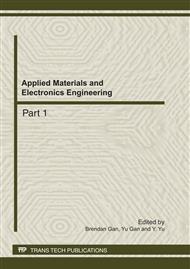p.405
p.409
p.414
p.418
p.423
p.428
p.433
p.439
p.445
Abscisic Acid-Induced Chilling Tolerance in Maize Seedlings Is Mediated by Nitric Oxide and Associated with Antioxidant System
Abstract:
Abscisic acid (ABA) and sodium nitroprusside (SNP) treatment significantly increased chilling tolerance in maize seedlings. ABA in combination with nitric oxide (NO) donor SNP further enhanced the ABA-induced chilling tolerance. But the addition of NO scavenger 2-phenyl-4,4,5,5-tetramethylimidazoline-1-oxyl-3-oxide (PTIO) nullified the increasing effect of SNP on chilling tolerance. In addition, the combination of ABA and PTIO decreased the ABA-induced chilling tolerance. Measurement of activities of superoxide dismutase (SOD) and catalase (CAT), hydrogen peroxide (H2O2) content and the level of lipid peroxidation (in terms of malondialdehyde) indicated that chilling stress induced an oxidative stress in maize seedlings. ABA treatment enabled maize seedlings to maintain higher SOD and CAT activities and lower level of H2O2 and lipid peroxidation under chilling stress. ABA in combination with SNP further enhanced the ABA-induced increase in SOD and CAT activities and lowered the chilling stress-induced lipid peroxidation in the ABA-treated seedlings. But the addition of PTIO scavenged the increasing effect of SNP. In addition, the combination of ABA and PTIO had a contrary effect with that of ABA and SNP. These results suggest that the ABA-induced chilling tolerance is mediated by NO, NO is involved in ABA-induced chilling tolerance by increasing activities of antioxidant enzymes and reduced endogenous H2O2 accumulation.
Info:
Periodical:
Pages:
423-427
Citation:
Online since:
October 2011
Authors:
Price:
Сopyright:
© 2012 Trans Tech Publications Ltd. All Rights Reserved
Share:
Citation:


